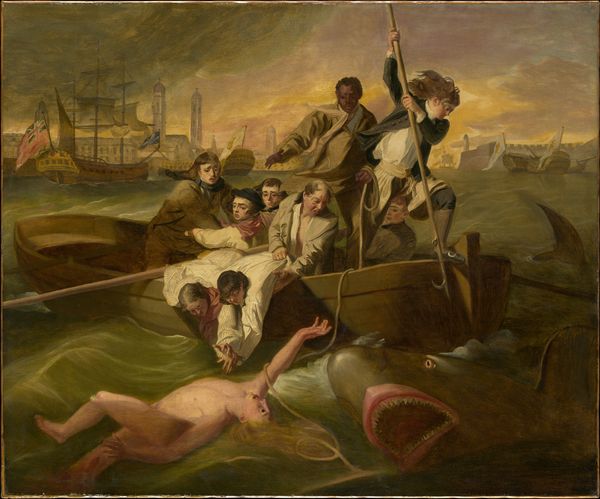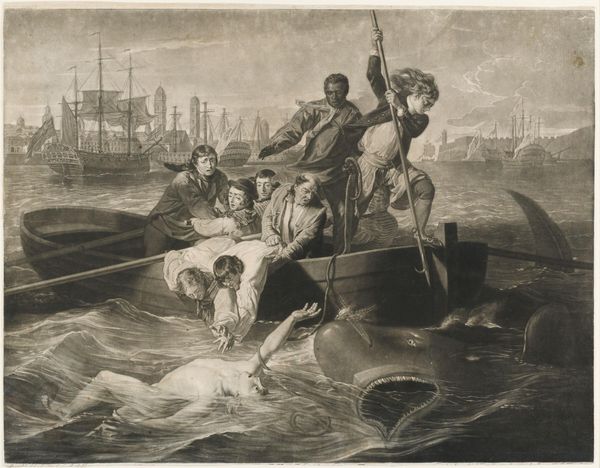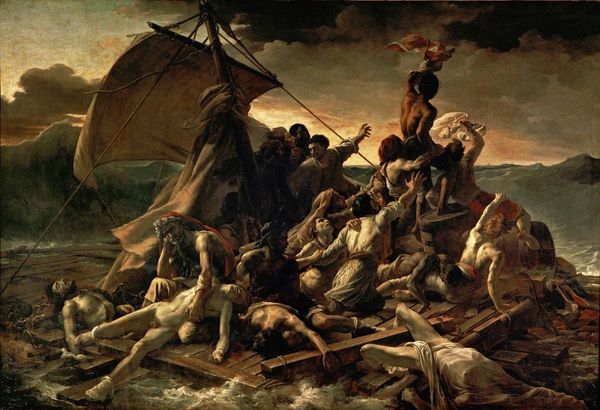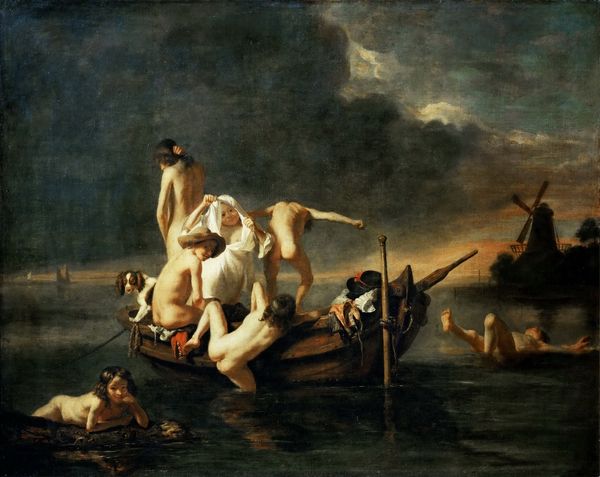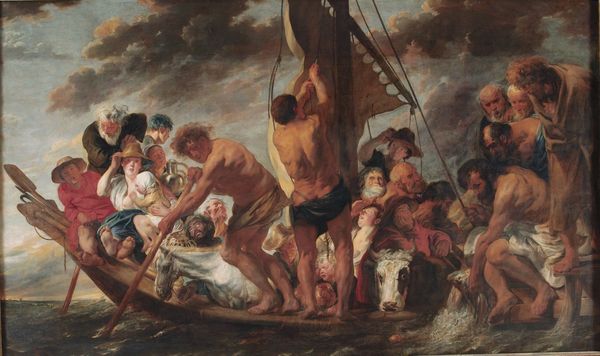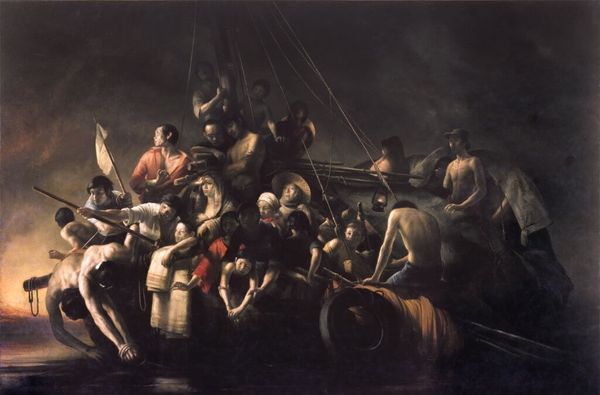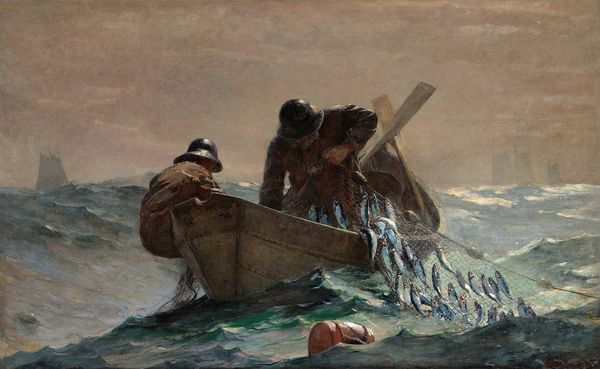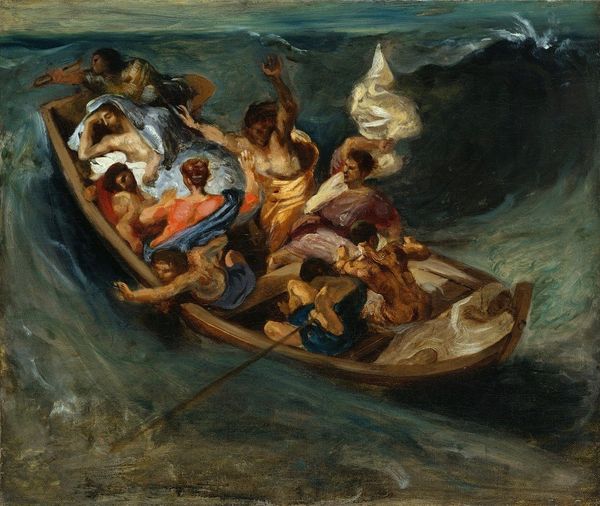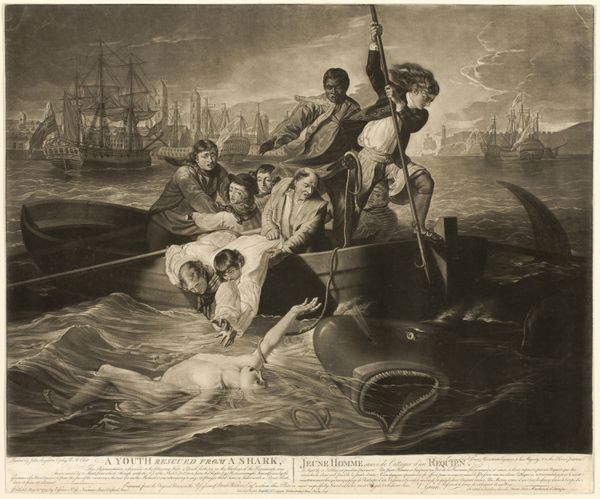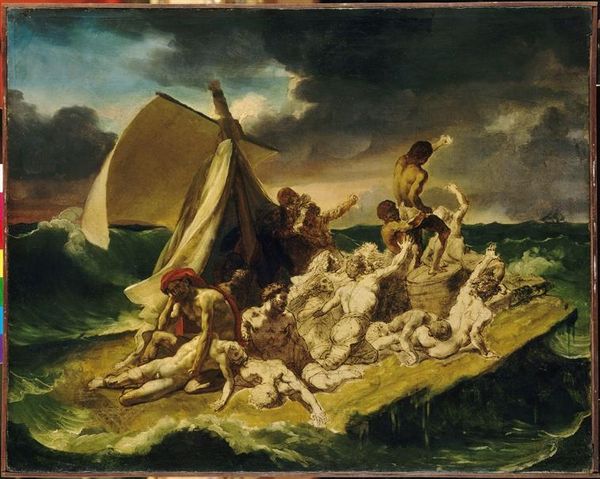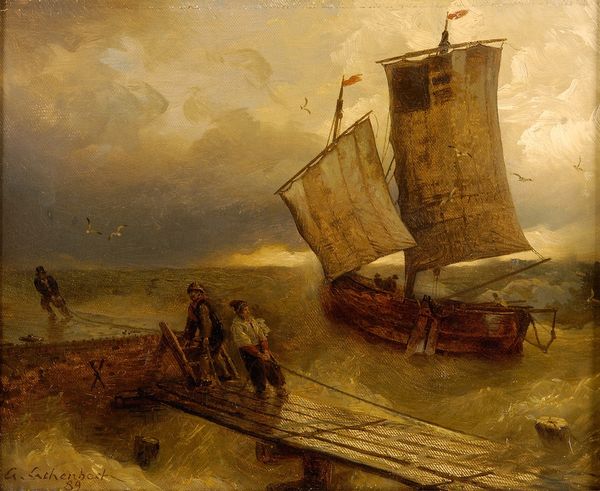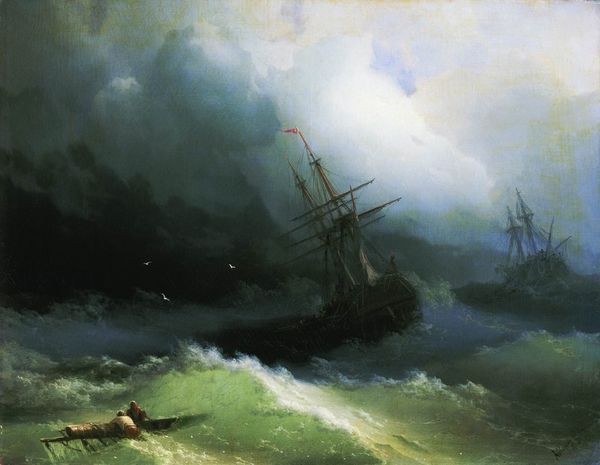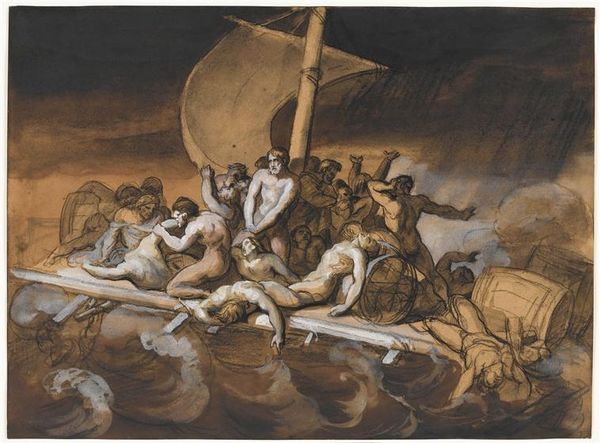
Copyright: Public Domain: Artvee
Editor: We’re looking at "Watson and the Shark," painted by John Singleton Copley in 1778. It's oil on canvas, and quite dramatic! The scene is incredibly tense, and the figures are caught in this moment of life and death struggle. How do you interpret this work? Curator: It's a powerful image, isn't it? Beyond the immediate drama, Copley's "Watson and the Shark" reflects a crucial tension in late 18th-century society: the simultaneous fascination and unease with the burgeoning commercial world. The narrative is based on a real event—the shark attack on Brook Watson, who later became Lord Mayor of London. Editor: Interesting! So it's like a snapshot of the times? Curator: More than that. Copley deliberately elevates this incident to the level of history painting, typically reserved for noble or biblical subjects. He transforms Watson's personal trauma into a spectacle with clear political and social implications. Notice the positioning of the Black sailor – he’s very prominent in the composition. Editor: I hadn't really thought about that... Curator: Consider that in the context of the transatlantic slave trade, the Black figure’s inclusion is complex and significant. His act of assistance underscores both prevailing social hierarchies and nascent ideas of humanism during the Enlightenment. Also, the harbor in the background frames the global stage where these dramas – commercial and personal – played out. What's the take away from this image now? Editor: Wow, I saw a dramatic scene, but it’s clearly about much more! It makes me wonder what other narratives are embedded in paintings. Curator: Absolutely. By examining art through the lens of history and social forces, we begin to see these powerful images as records of the past, capturing complex stories beyond just what meets the eye.
Comments
No comments
Be the first to comment and join the conversation on the ultimate creative platform.
